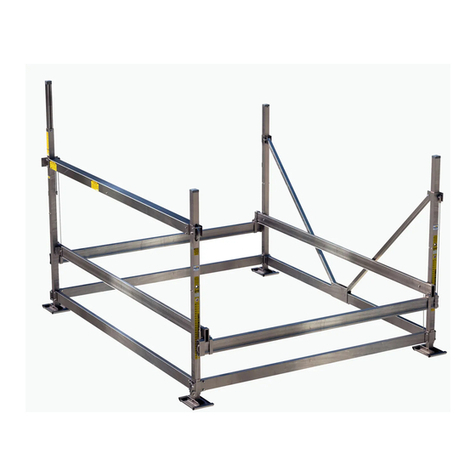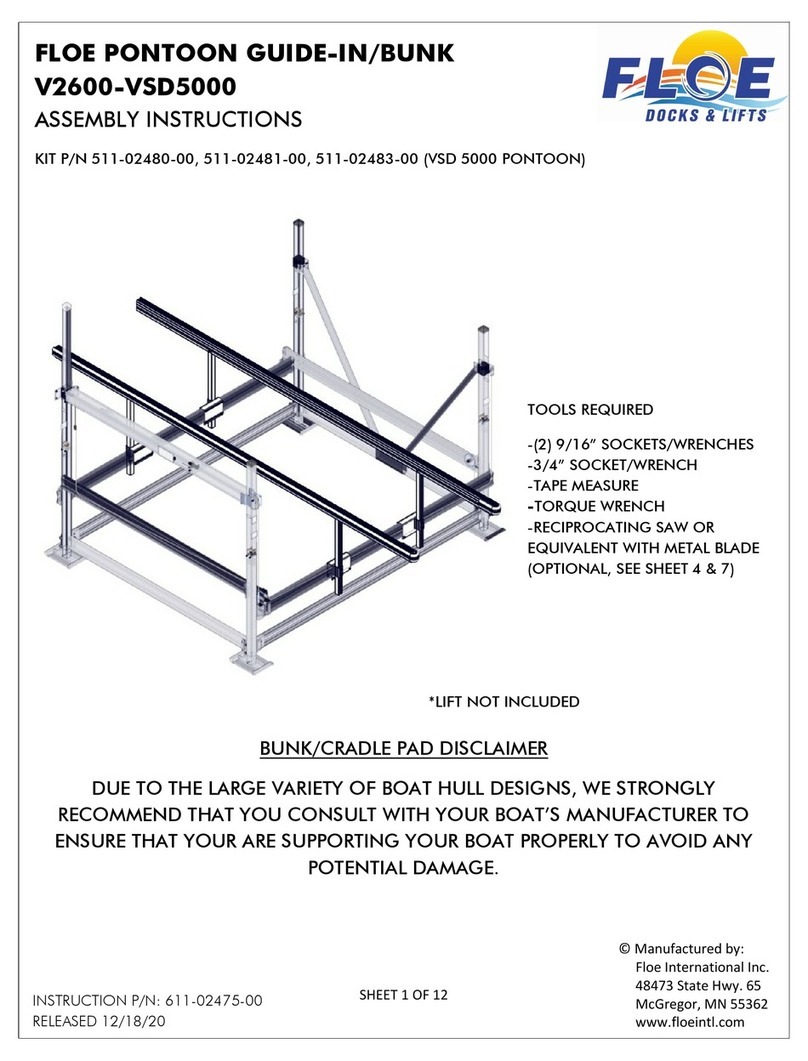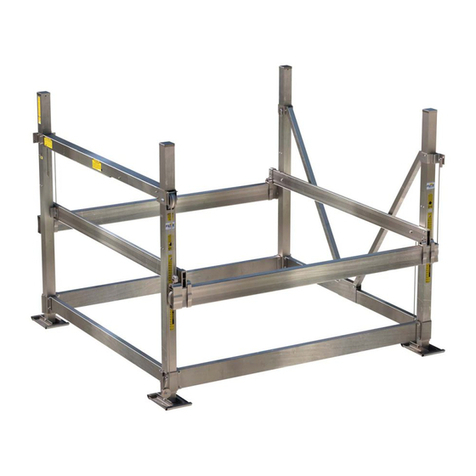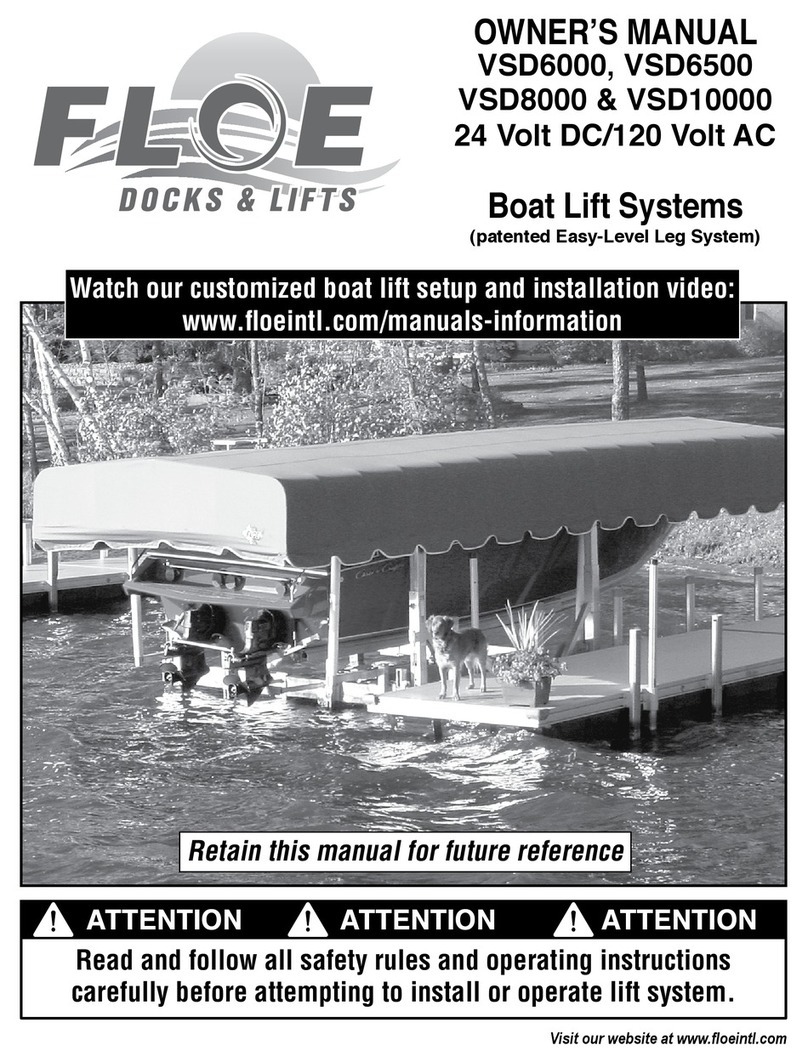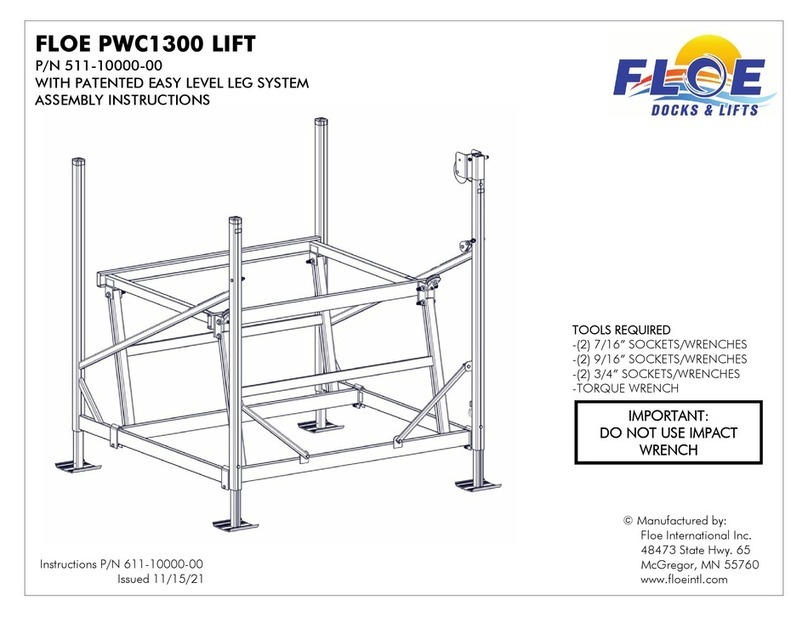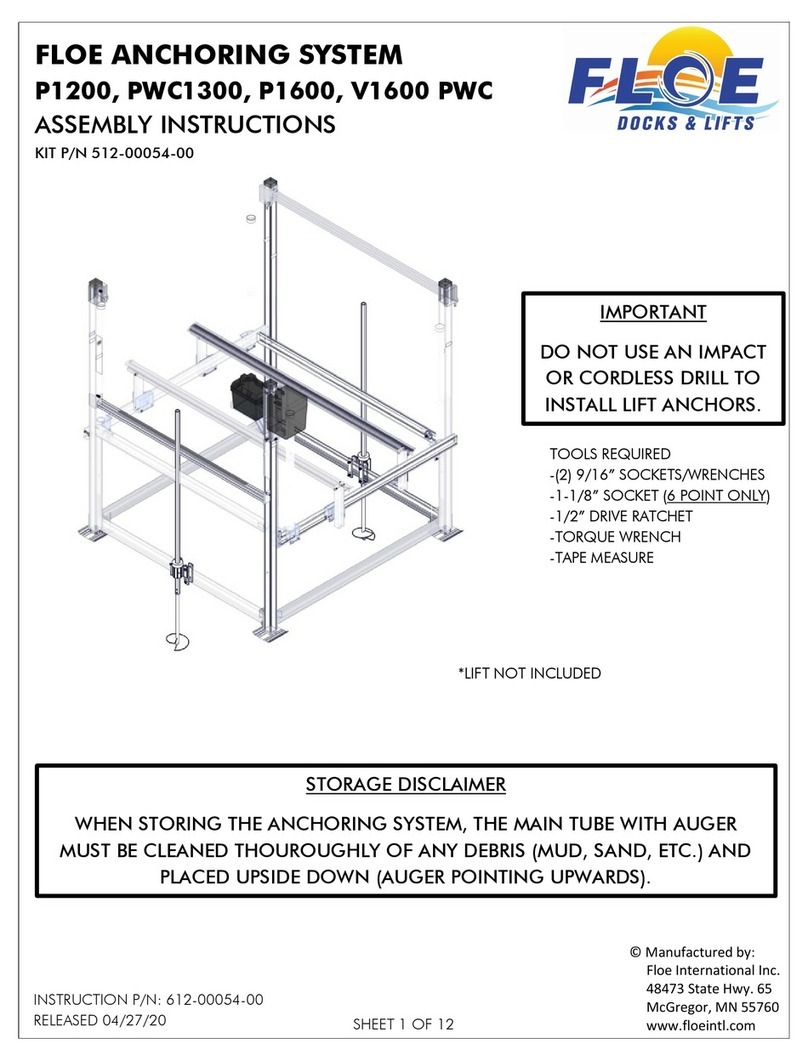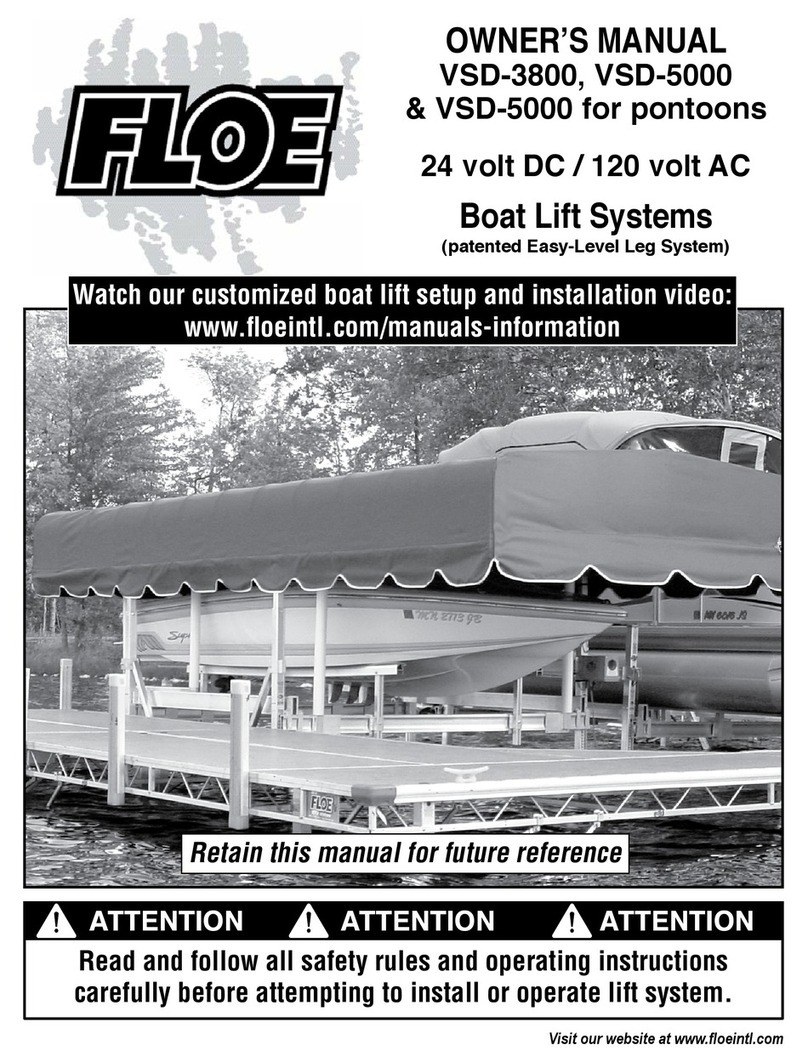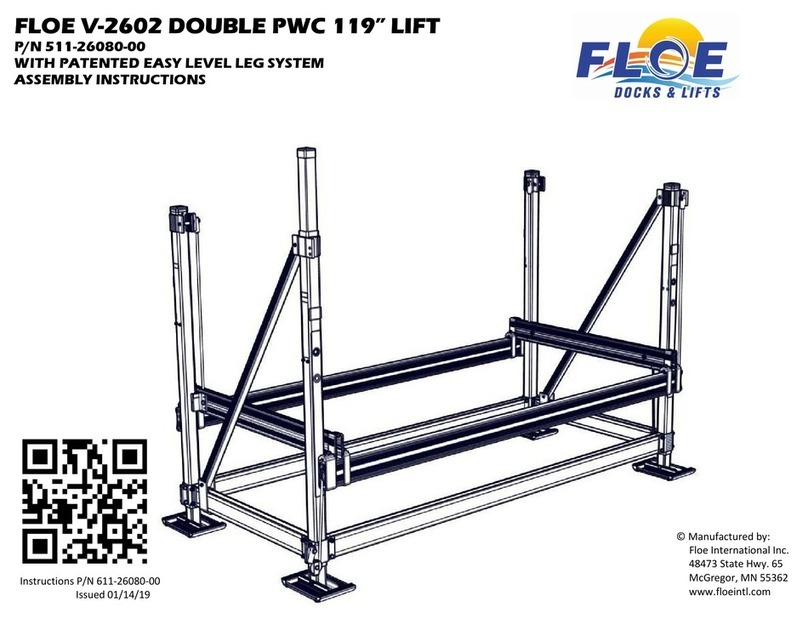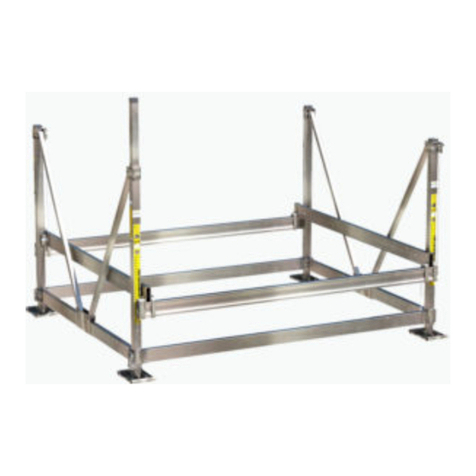Lift must be assembled and installed properly or
mechanical failure and possible injury may occur.
Never overload a boat lift. See
capacities/specifications for important
information regarding the boat’s actual weight
and boat lift capacity limitations.
If watercraft is open to the accumulation of rain
water, be sure boat’s drain plug is pulled.
Additional water weight may cause the maximum
lift capacity to be exceeded, resulting in potential
lift damage or bodily injury.
Never operate a boat lift that is not level. Under
normal conditions a boat lift operates under
extreme force. When the lift is not level, these
forces are greatly multiplied and bodily injury or
damage to the lift can result.
Perform all inspections and maintenance on a
regular basis. Replace any worn parts
immediately to avoid potential lift failure. Ensure
all pulleys are operating properly and that all
cables and their attach points are secure and free
of excessive wear and fraying. See Inspections &
Maintenance section for all important details.
Never lift a tour boat with water filled ballast bags.
This extra weight will overload the lift.
WARNING
Bodily injury or damage to lift system may result
if installation or removal of this lift is attempted
without first reading and understanding the
installation and removal section of this manual.
If this unit is equipped with a canopy, severe wind
damage may occur if the lift is not securely held
down to the lake bottom by screw anchors or by
some other means.
FLOE lift systems have not been tested in
brackish or salt water conditions. Lift failures due
to installations in brackish or salt water locations
will not be covered by FLOE’s warranty. FLOE
will not be responsible for incidental or
consequential damages resulting from these
installations.
Never install the lift system in a body of water
whereas either the rising water or wave action
will not always flow under the main lift beam. For
example, do not install lift in bodies of water with
significant water fluctuation or large water bodies
that have excessive wave action.
The electrical system is not designed to be
substantially saturated, immersed or submerged
in water. FLOE will not be responsible for
incidental or consequential damages resulting
from electrical damages in these situations.
This manual is intended to serve as an owner’s use and maintenance guide for a lift that has been
properly assembled by a qualified, trained professional. Detailed assembly instructions
are packaged with the lift systems.
If the boat lift system is not assembled, installed, or operated properly, mechanical failure,
as well as serious injury or death, could result. See to it that all users understand
that this lift system is a piece of heavy equipment that requires the use of good
judgement and the knowledge of its dangers and limitations.
4












